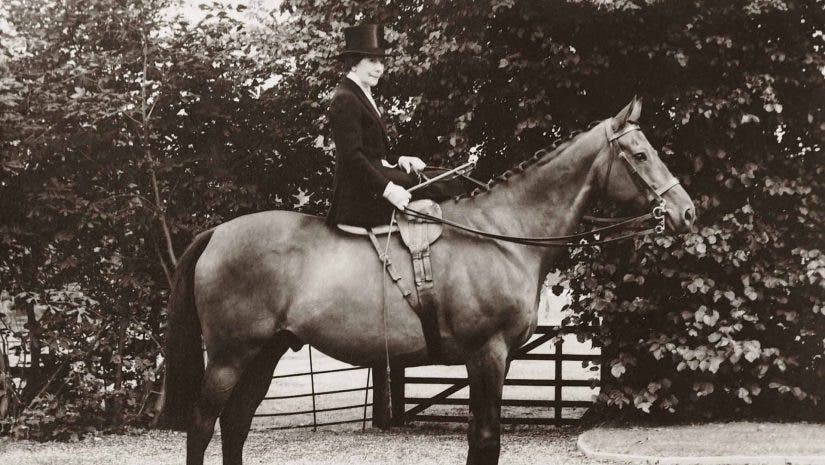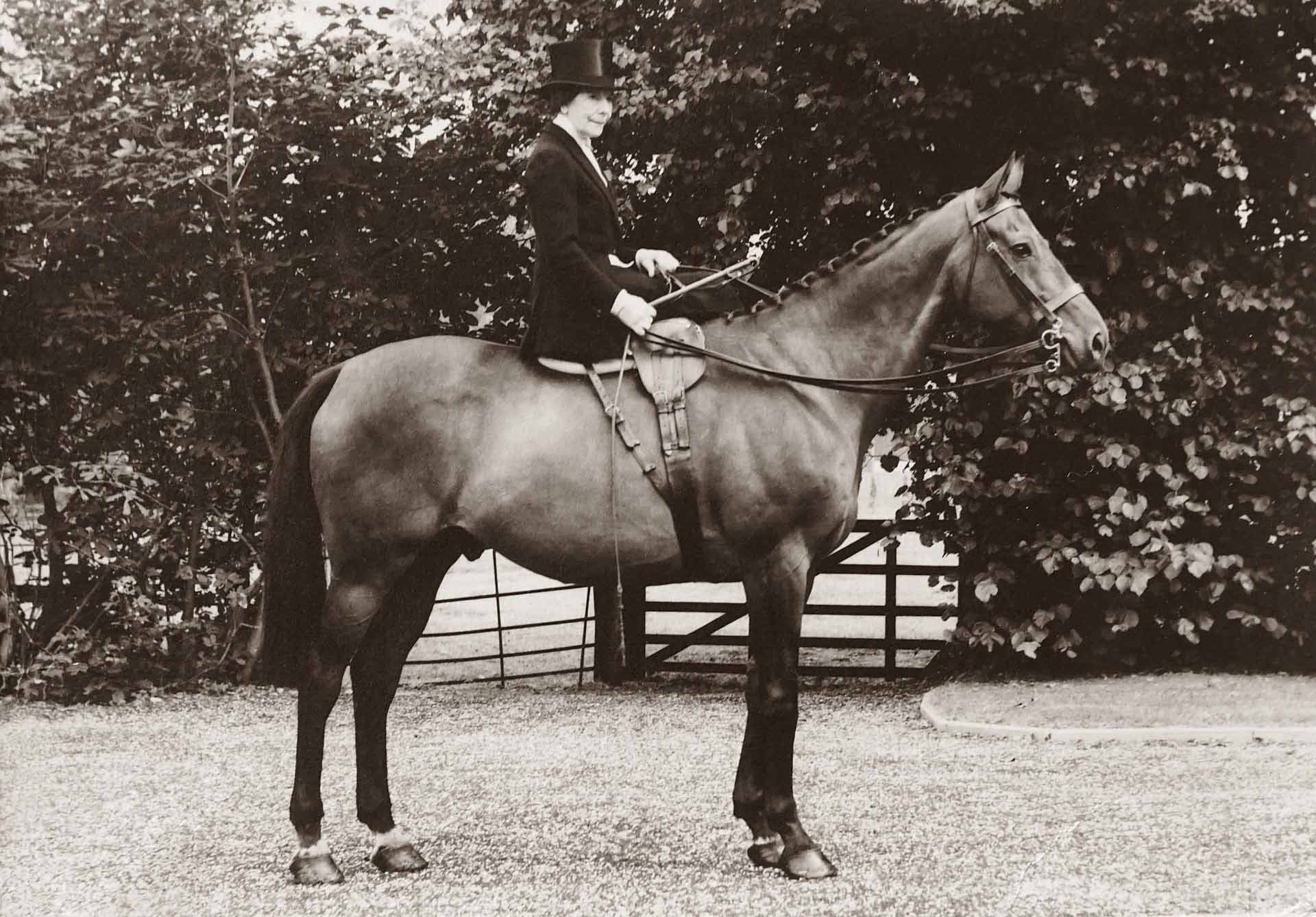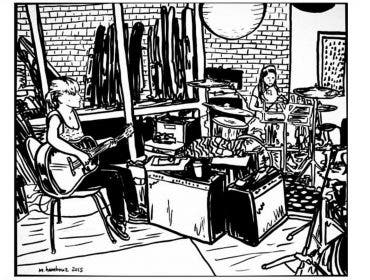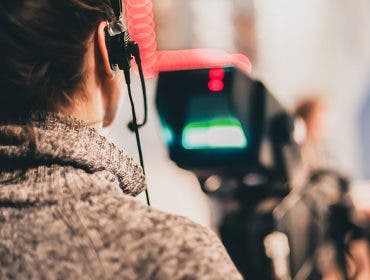Back in the days of regular old film cameras, people didn’t have the luxury of saving all their pictures onto memory cards and backing them up on a computer. In those days, you had to get the roll of film developed, have the photos printed, and tuck them away safely into photo albums to ensure that the memories captured in each photo could be enjoyed for years to come.
Unfortunately, these printed photos have a limited lifespan because the quality of the photo paper and ink used wasn’t as good as the quality of what we use now. As the years went by, deterioration would set in, leaving us with photo albums and boxes full of old, damaged photos with faded ink, tattered edges, and even some scratches and stains here and there.
Thankfully, old photo restoration isn’t all that hard. You just have to know how to do it!
7 Steps to Restore Old Photos in Photoshop
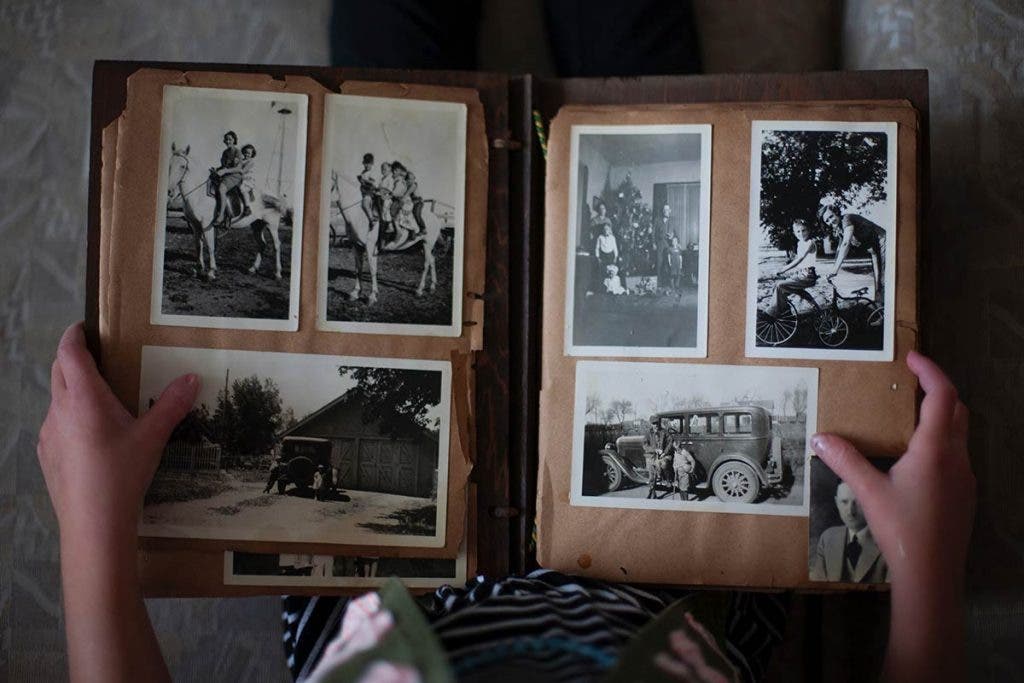
Below we provide step-by-step instructions on how to restore old photos. These steps apply to digital photo restoration using the latest version of Adobe Photoshop.
How to Restore Old Photos in Photoshop:
- Digitize your old photo
- Open the image in Photoshop
- Crop, straighten, or rotate the image
- Review your photo for any corrections you want to make
- Make the necessary adjustments to your image
- Apply a filter to reduce noise
- Save the newly restored image
1. Digitize your old photo
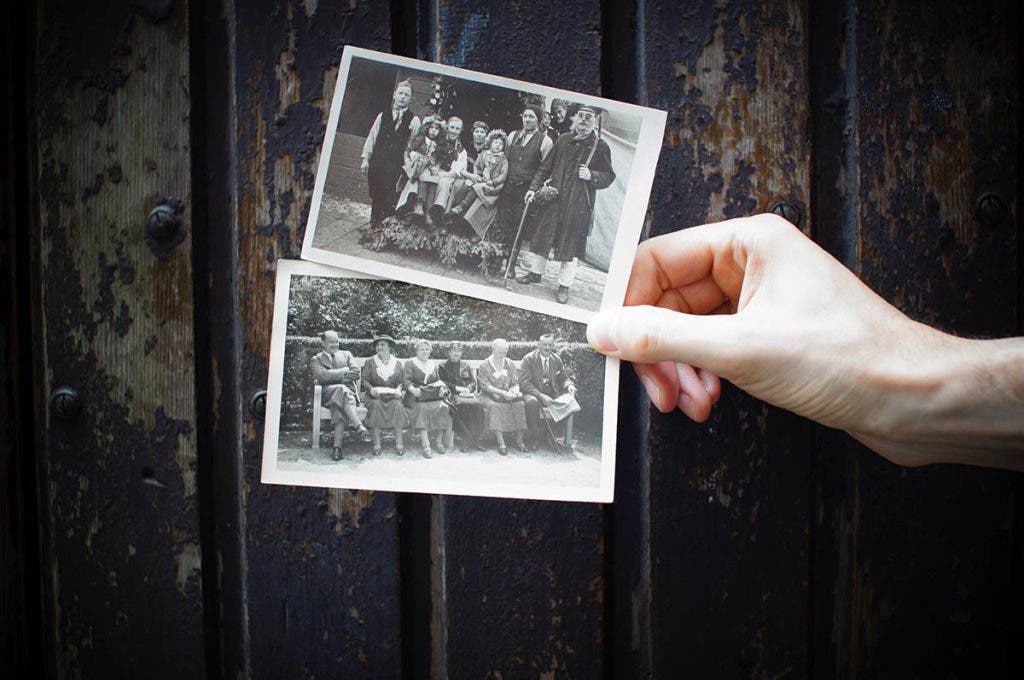
The first step in the old photo restoration process is to scan the image to get a digital copy. You can use a regular photo scanner, take a photo using a digital camera, or use a scanner app on your smartphone.
Whichever method you use, make sure that it will yield a large, high-quality copy of the photo to make it easier to work with.
2. Open the image in Photoshop
Next, open the digital image in Photoshop. Then create a second copy of the image. You’ll want to keep an original copy for reference, so you’ll be working on altering the second copy.
How to create a duplicate copy of an image in Photoshop:
- Select a layer in the Layers panel.
- Drag the layer to the Create a New Layer button, or select the Duplicate Layer option from the Layers menu or Layers panel menu.
- If you’ve selected the Duplicate Layer option, give your layer a name, and click OK.
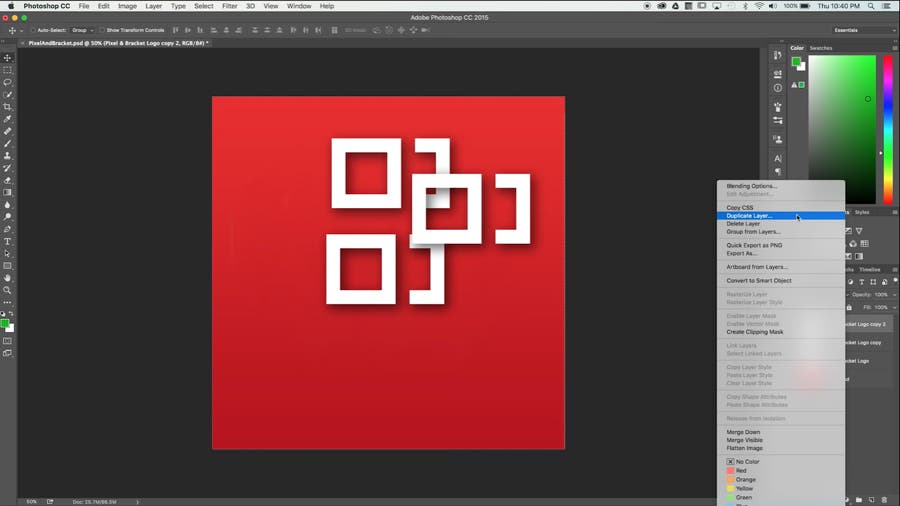
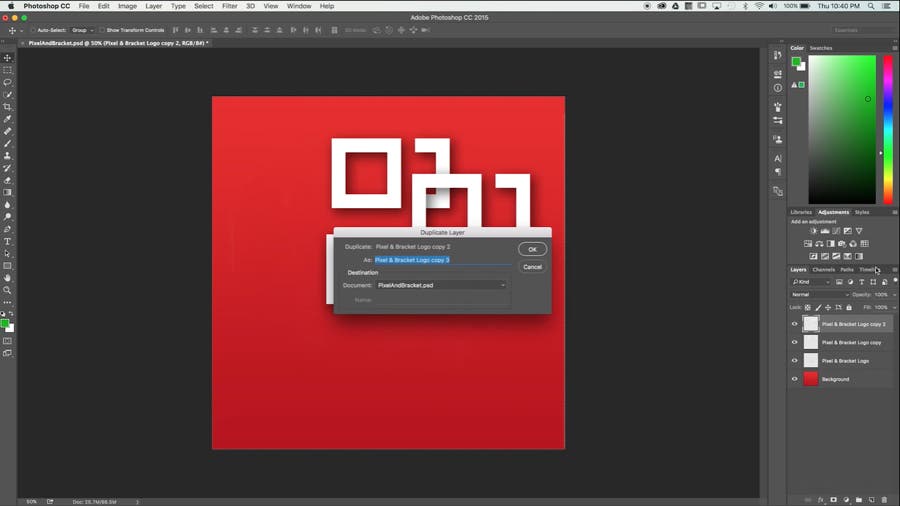
Don’t forget to click the eye icon on the left side of your original layer before working on your photo. Selecting the icon hides the layer from the panel.
3. Crop, straighten, or rotate the image
Before you can begin making any adjustments, make sure that you’re working with a clean, properly oriented image. You can do this by cropping, straightening, or rotating the image.
If there’s any unwanted white space (or any kind of space that shouldn’t be there) around the edges, you can simply crop all of that out.
How to crop your image:
- Click on the Crop icon on the toolbox (on the left side of Photoshop’s default workspace).
- Draw a new cropping area or drag the edges of the crop box to the desired positions.
- Press Enter (Windows) or Return (Mac OS) to crop the image.
You can also use the Crop menu to keep your image’s aspect ratios proportional, but only if you’re printing your old photo.
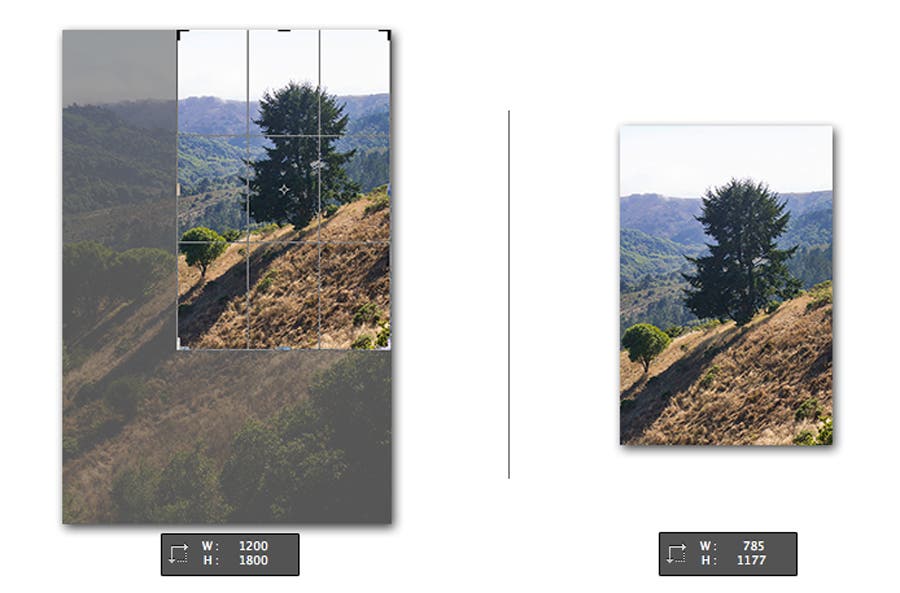
If the scan of your image is a bit crooked, you can straighten it out using the crop tool.
How to straighten a crooked image:
- Click on the Crop icon, then click the Straighten icon on the toolbar.
- Drag a line along a horizontal or vertical element in the photo.
- Let go of the mouse so that Photoshop can rotate your image and crop its uneven edges.
- Once you are satisfied, press Enter. Photoshop will also remove the excess image if you’ve enabled the Delete Cropped Pixels checkbox.
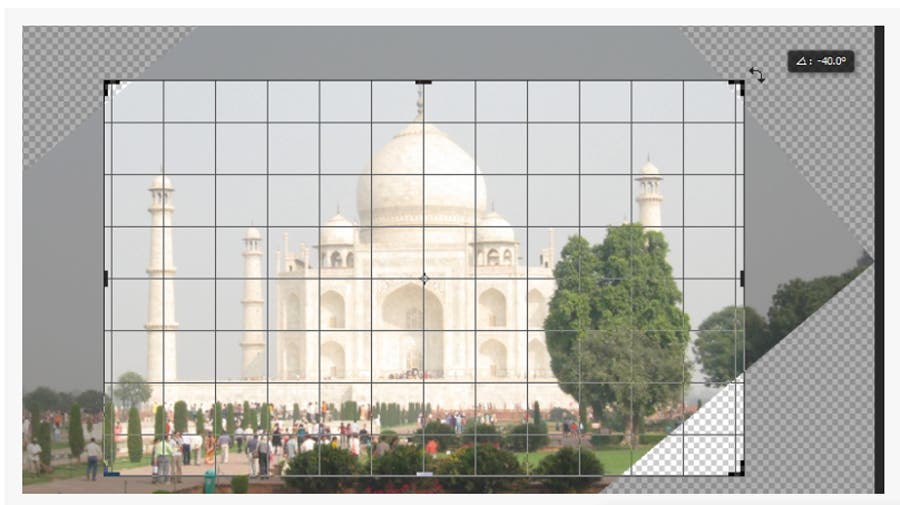
How to rotate your image:
Photoshop CC lets you rotate your image through its Image Rotation setting or the Transform function in the Edit menu.
To rotate your image using the Image Rotation option:
- Click on Image in the taskbar.
- Select Image Rotation.
- Choose your preferred rotation.
To rotate your image using the Edit menu:
- Click on your image to select it.
- Click on the Edit menu, then choose Transform.
- Choose your preferred rotation.
4. Review your photo for any corrections you want to make
Assessing the image you’re working on will help you decide on the adjustments or corrections that you want to make. Your desired changes will depend on your photo’s current condition.
5. Make the necessary adjustments to your image
There are two ways to do this step in Photoshop: adjusting your image’s color and fixing its damaged spots.
Make color correction adjustments.
Old photos are usually faded, but if you want to improve the tone, color, contrast, and overall vibrancy of the photo, Photoshop can do these, too.
If you select Image from the taskbar, you’ll see a drop-down menu that will pretty much give you everything you need for some basic color correction. Under Adjustments, you’ll see three options: Auto Tone, Auto Contrast, and Auto Color. Try these out first and see if these automatic corrections deliver your desired effect. If not, you can do these corrections manually.
It’s a good idea to learn how to read the histogram so that you can make highly accurate adjustments. From there, select Adjustments and use the different functions under this menu option. There are basic adjustments such as Brightness, Contrast, Exposure, and Vibrance, or the slightly more in-depth adjustment tools such as Curves and Levels.
Depending on the condition of your photo, the best way to restore old photos is to play around with these different adjustment tools to get the right tone, color, and contrast.
If your image has a color cast, here are a few steps to follow to correct the effect:
- Highlight your duplicate layer, then click on the adjustment layers icon under the Layers panel.
- Choose Levels from the adjustment layer options.
- To adjust your photo’s RGB (red, green, and blue) levels, click on the dedicated tab. A RGB menu will appear.
- Click on any of the color options, then bring the white and black sliders to the histogram’s upward line.
- Once you’re done adjusting the RGB levels, click on the Layers panel to exit.
- Highlight your duplicate layer and your adjustment layer, then right click on the area and select Merge Layers to combine both layers.
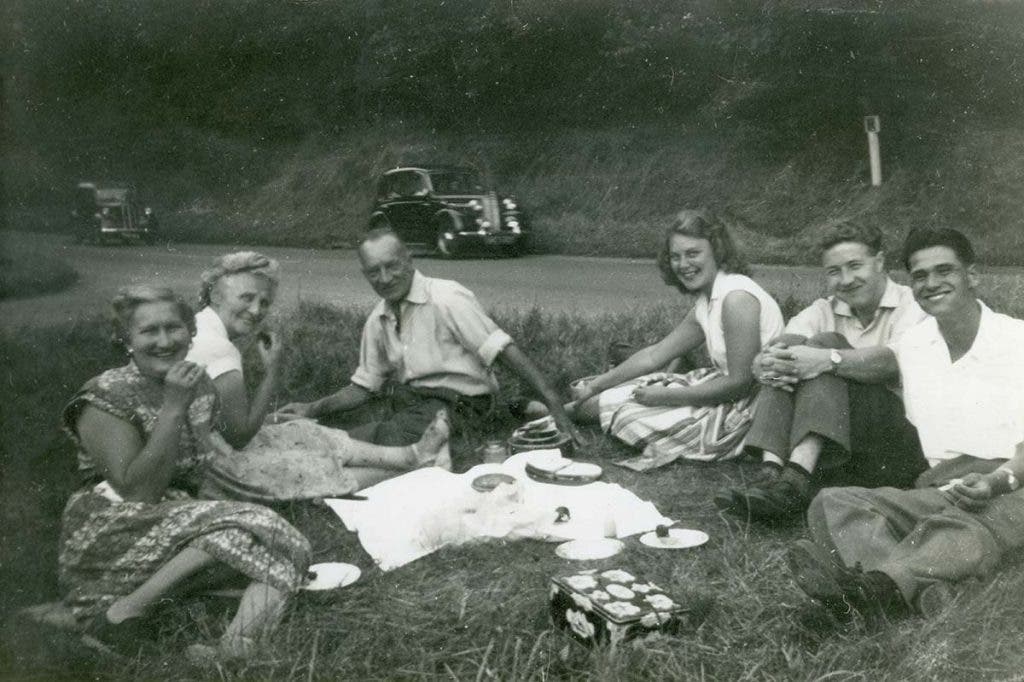
Fix the damaged spots.
This part is where it gets a bit tricky—you’ll definitely need an eye for detail and a whole lot of patience! If there are any scratches, stains, and other unwanted marks on your photo, you can use a few beginner-friendly spot correction Photoshop tools: the Spot Healing Brush, the Patch Tool, and the Clone Stamp.
How to use the Spot Healing Brush:
- Click on the Spot Healing Brush icon (the one that looks like a band-aid) on the toolbox.
- Choose your desired brush size in the options bar.
- Choose between the Proximity Match, Create Texture, or Content-Aware Type options. Any of these options should work for what you’re trying to achieve.
- Select or deselect the Sample All Layers option if you want to sample data from all layers or one active layer.
- Click on the spot you want to fix, or click and drag the brush over imperfections in a larger area.
How to use the Patch Tool:
- Select the Patch Tool.
- Select the area you want to repair by dragging, then select Source in the options bar. You can also select your sample area by dragging and selecting the Destination option.
- Adjust your selection by using the Shift-drag, Alt-drag/Option-drag, or Alt+Shift-drag/Option+Shift-drag combinations.
- Select Transparent if you want to extract a transparent texture from your sample area, or deselect it to put the sample area over the target area.
- Adjust the Diffusion slider.
- Place the pointer inside your selection, then drag it to your sample or patch area.
How to use the Clone Stamp:
- Click on the Clone Stamp icon in the toolbox.
- Adjust the brush size to the corresponding size you want. Use the options bar to set your brush’s blending mode, opacity, and flow.
- Set the Aligned or Sample options for specific pixel alignment and layer sampling.
- Alt+Click or Option+Click a clean spot that you want to “clone.”
- Click or drag the cursor around the damaged area to “paint” over it with the cloned pixels from your sampling point.
Photoshop also features Burn and Dodge tools that you can use to adjust image detail and restore old photos. These photo restoration techniques will make areas in your photo lighter or darker, depending on how much you’ve painted.
How to use the Burn Tool or Dodge Tool:
- Select any of these tools.
- Choose a brush tip and set brush options in the options bar.
- Select any of the following Range options: Midtones, Shadows, or Highlights.
- Set your preferred exposure for the Burn tool or Dodge tool.
- Turn your brush into an airbrush by clicking the airbrush icon or selecting the Airbrush option in the Brush panel.
- For less shadow and highlight clipping, select the Protect Tones option.
- Drag the brush over the part that you want to lighten or darken.
When using any of these tools, it’s important to zoom in as close as you can on the spot you want to fix for the most accurate and refined results.
6. Apply a filter to reduce noise
You can’t magically get rid of the dust and scratches with just a press of a button—you’ll have to do it manually. However, you can make that job easier by using Photoshop’s Filter functions to reduce some of that unwanted noise.
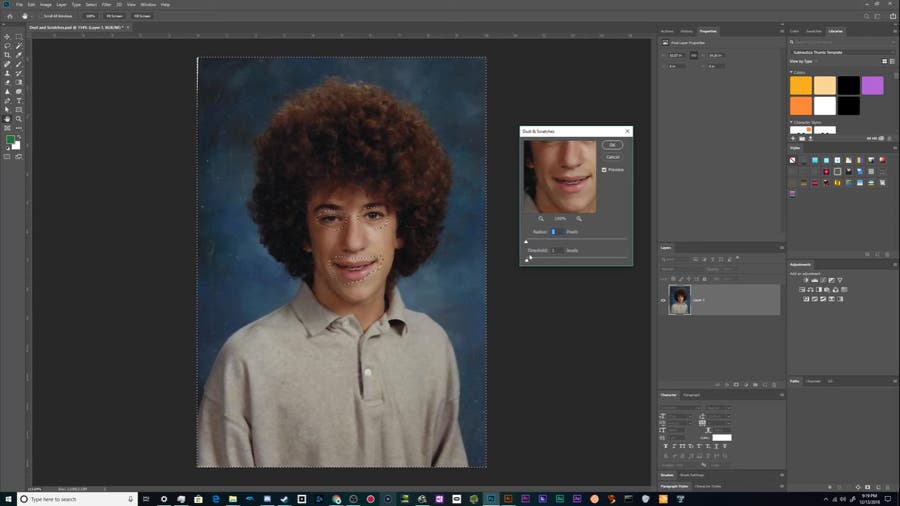
How to reduce noise in your image:
- Click on Filter in the taskbar.
- Select the Convert to Smart Filters option.
- Go back to the Filter tab, click on Noise and then select Dust & Scratches.
- Using the pop-up window, slowly increase the Radius pixels and Threshold levels in increments to achieve the desired effect. However, be careful not to overdo it to avoid losing too much detail.
- Click OK.
- Go back to Filter, click on Noise, and then select Reduce Noise.
- Adjust the settings accordingly in the pop-up window, and pay attention to the Preview box to monitor the effect of each adjustment.
7. Save the newly restored image
Once you’re happy with the image, delete the unedited layer (the original reference layer) or right-click the edited layer and select Flatten Image (make sure that your edited layer is on top). After that, just follow the steps below to save your photo. This will be the last part of your journey to restore old photos.
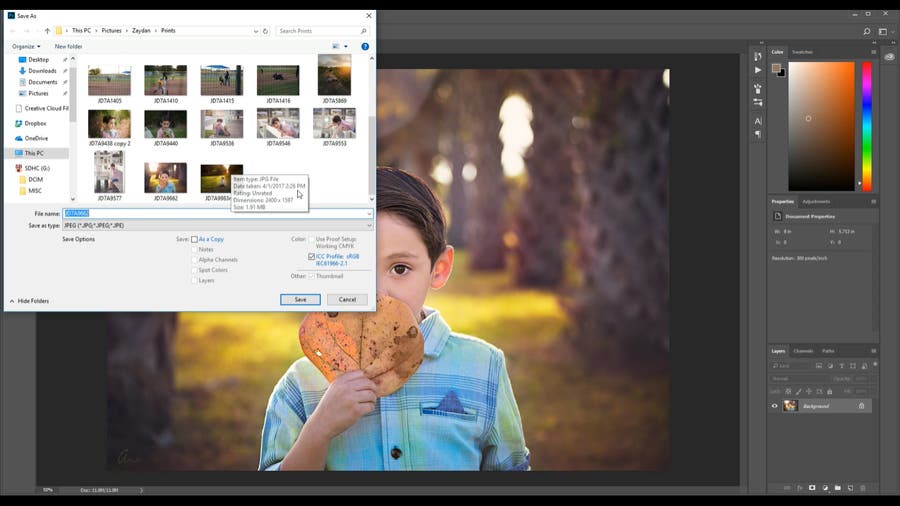
- Click File on the taskbar, then select Save As.
- Choose your preferred file format from the Format menu.
- Specify your filename and location.
- Select your preferred saving option in the Save As dialog box.
- Click the Save button to save your newly restored photo.
How to Restore Old Photos: Frequently Asked Questions
Can old, damaged photos be restored?
Depending on how badly damaged the photograph is, most old, damaged photos can definitely be restored, digitally at least. We have outlined a very effective process for your above. However, here are a few suggestions for analog fixes.
Sometimes an old photograph can get stuck to the glass covering it, particularly if it has been hanging in a damp or humid environment. Before you pull it away and damage it further, first try using a hair dryer on warm setting and heating the back of the print from about 5 to 8 inches away. If you have an old photo which has a tear through it, but you don’t want the tear to progress or you want to put the pieces back together, you should use acid-free tape as it won’t damage the print further.
What causes old photos to fade?
Old photographs often have a faded look to them. The main reason for this is from the interaction of UV light with the ink or chemicals in the picture. Chromophores are compounds in ink that have the ability to absorb light. When the UV light and chromophores interact, they adversely affect the physical makeup of the ink or dye. This is what ultimately leads to fading of the photograph.
Smoke, household chemicals, and dust can also cause pictures to fade by damaging its chemical makeup. You should try to keep your photos away from open windows and fireplaces, if possible.
What is the best free photo restoration app?
Although Photoshop is an amazing app to help you restore old photos, it is an expensive software requiring subscription payments. A good free app is Pixlr. The best part is all the editing is done completely online, so it’s not specific to any operating system. There are many robust tools to choose from.
If you’re familiar with other editing software like Photoshop, you’ll have no trouble learning Pixlr. The tools have similar functionality and features. The “retouch” tool, specifically, is a favorite. With it, you can easily remove spots, scratches, and dust spots. Once you’re done restoring your old photograph, you can be even more creative by removing the background, making a collage, and applying various filters. If you ever get stuck or want to dive deeper, there are plenty of tutorials available on YouTube.
Conclusion
We hope you’re found our tutorial on how to restore old photos fun and educational. Adorama’s 42West is the content destination for photographers, filmmakers, audio creatives, and all things electronic. Check out our up-to-date editorial features on all the latest gear, how-to’s and interviews with today’s most relevant industry insiders.
